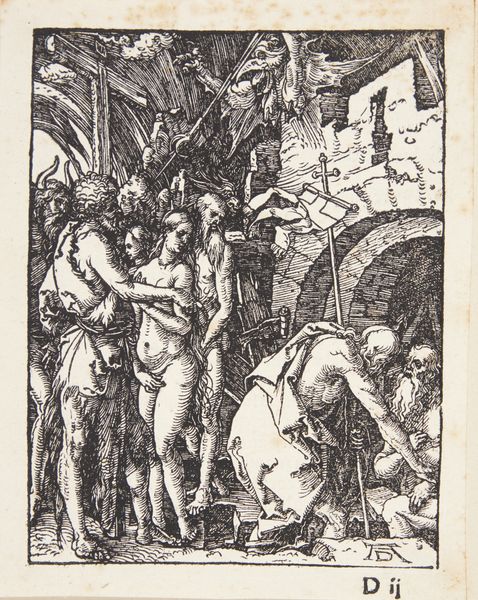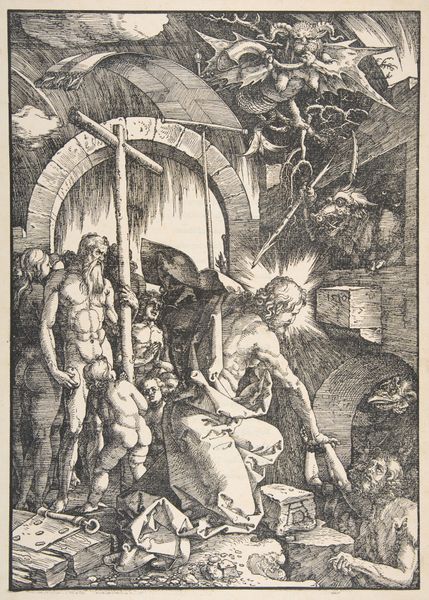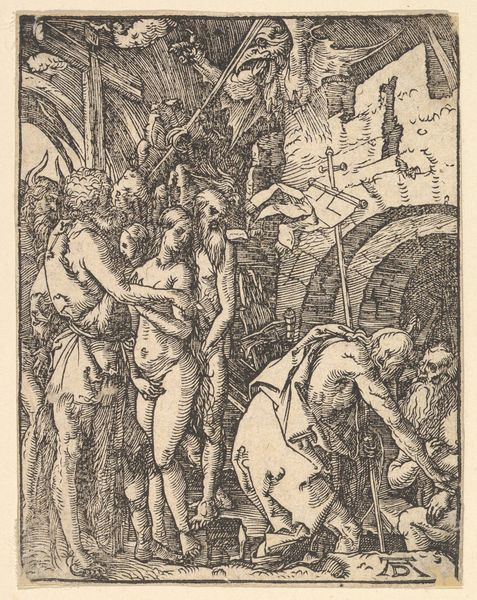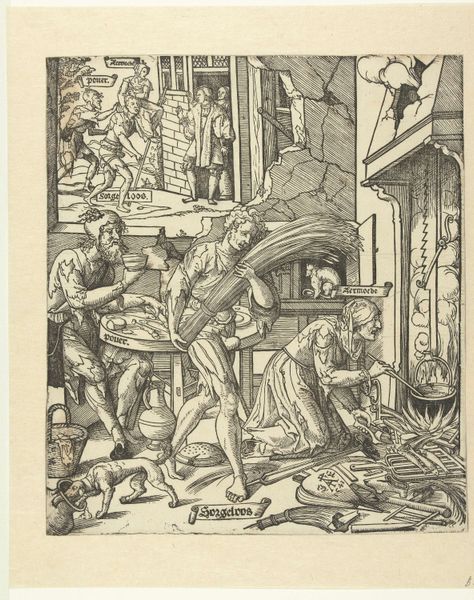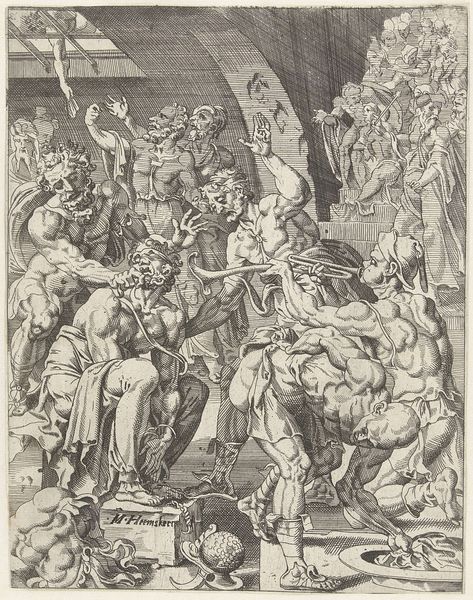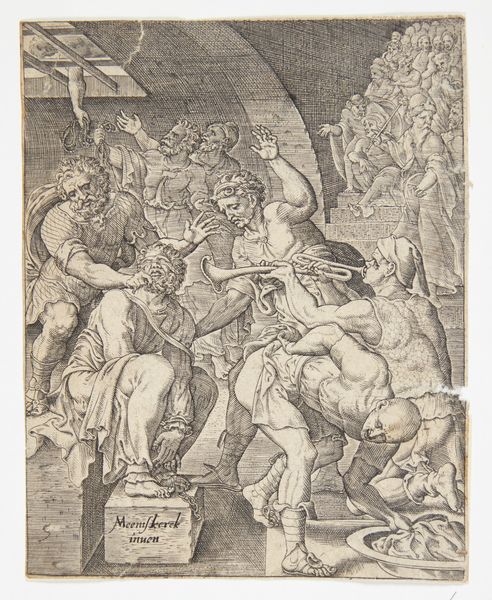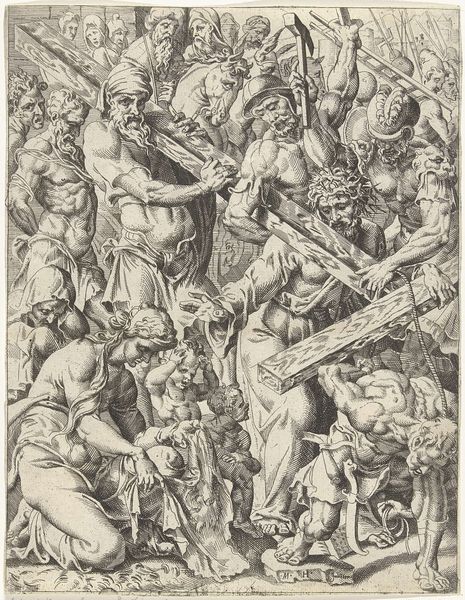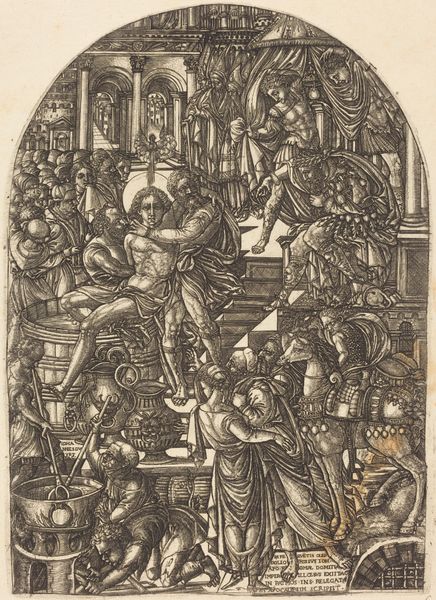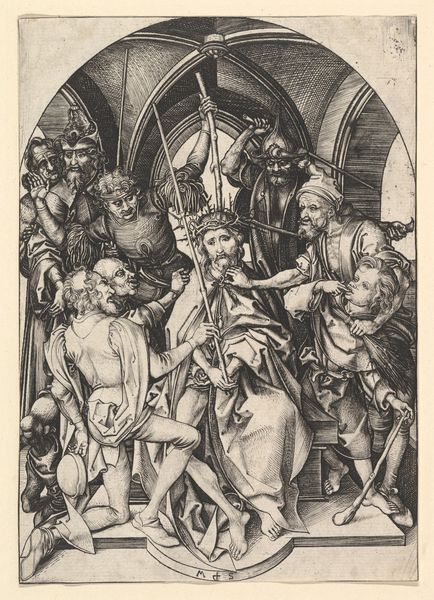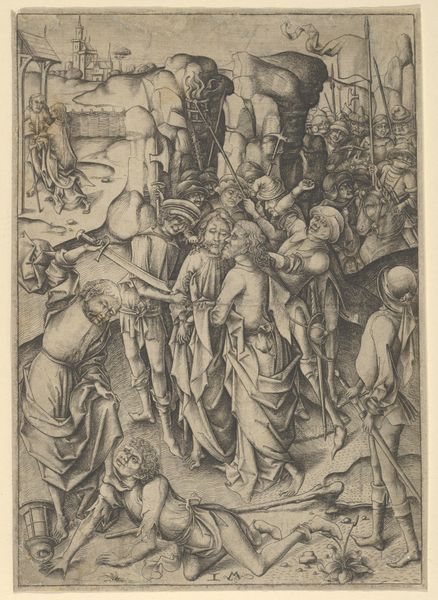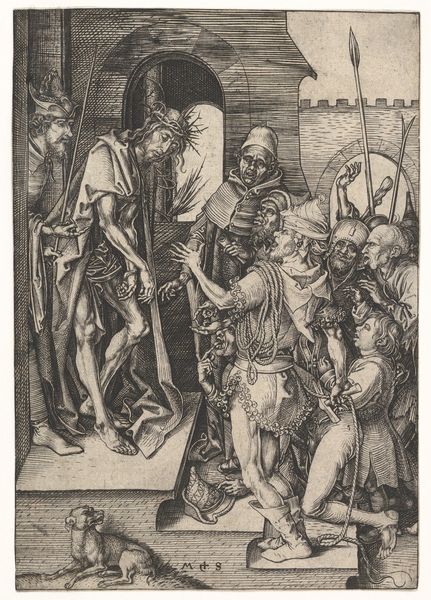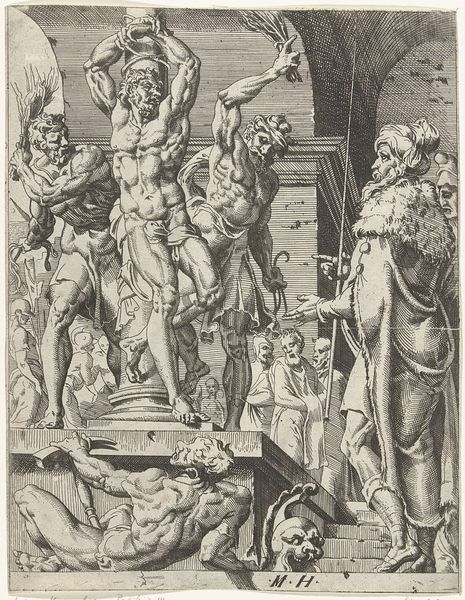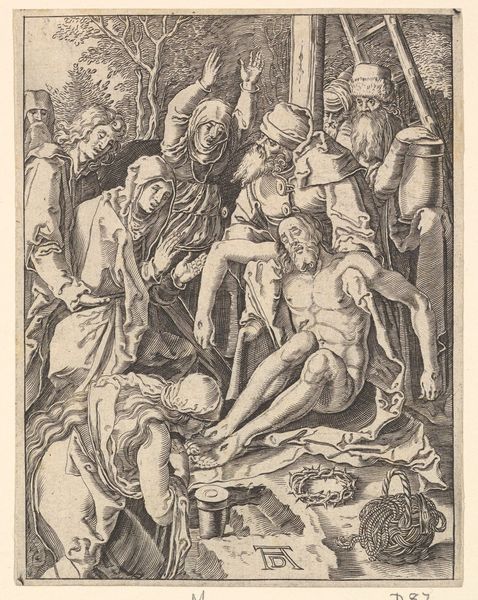
Christ in Limbo; Christ walking down to the arched gateway to Limbo on the right, on the left a group of people including Moses, John the Baptist, Adam and Eve, after Dürer 1495 - 1539
0:00
0:00
drawing, print, engraving
#
drawing
#
narrative-art
#
pen drawing
# print
#
figuration
#
line
#
history-painting
#
italian-renaissance
#
engraving
Dimensions: Sheet: 5 1/16 in. × 4 in. (12.9 × 10.1 cm)
Copyright: Public Domain
Curator: This is Marcantonio Raimondi's "Christ in Limbo; Christ walking down to the arched gateway to Limbo on the right, on the left a group of people including Moses, John the Baptist, Adam and Eve, after Dürer." It's an engraving dating sometime between 1495 and 1539. Editor: Well, it's incredibly busy, isn’t it? Almost claustrophobic with all that dense cross-hatching. It definitely conveys a sense of being trapped, appropriate for a depiction of Limbo, I suppose. Curator: The composition is indeed complex. Note how Raimondi uses line to define form and space. Observe the varying densities and directions that create depth and shadow, structuring the narrative within a limited plane. The stark contrast evokes an almost overwhelming intensity. Editor: Precisely. The intensity, for me, stems from its socio-religious context. This print visualizes a theological concept – Christ's descent into Limbo to liberate righteous souls. Engravings like these disseminated religious narratives to a wider audience, reinforcing faith but also acting as potent ideological tools. Who gets to be deemed righteous, and why? Curator: Interesting. Beyond the historical factors, consider how Raimondi appropriates and interprets Dürer’s style, using linear precision. It's also worthy to analyze the formal choices of posture and how they lend gravity and divinity to Christ himself as a central figure, descending down towards those on the lower-left. Editor: It’s fascinating to consider the mechanics of influence at play here, especially within a workshop context and what artistic exchange meant during the Renaissance. Raimondi adapts, yet also reshapes the original imagery according to his contemporary viewership, subtly altering the reception of Durer's initial message. Curator: Absolutely, seeing the interplay between form and context unveils complex intentions and outcomes within Italian Renaissance art, creating conversations that speak even now. Editor: A powerful and unnerving testament, indeed. It challenges us to confront art's complex role throughout history and examine its multifaceted interpretations.
Comments
No comments
Be the first to comment and join the conversation on the ultimate creative platform.
